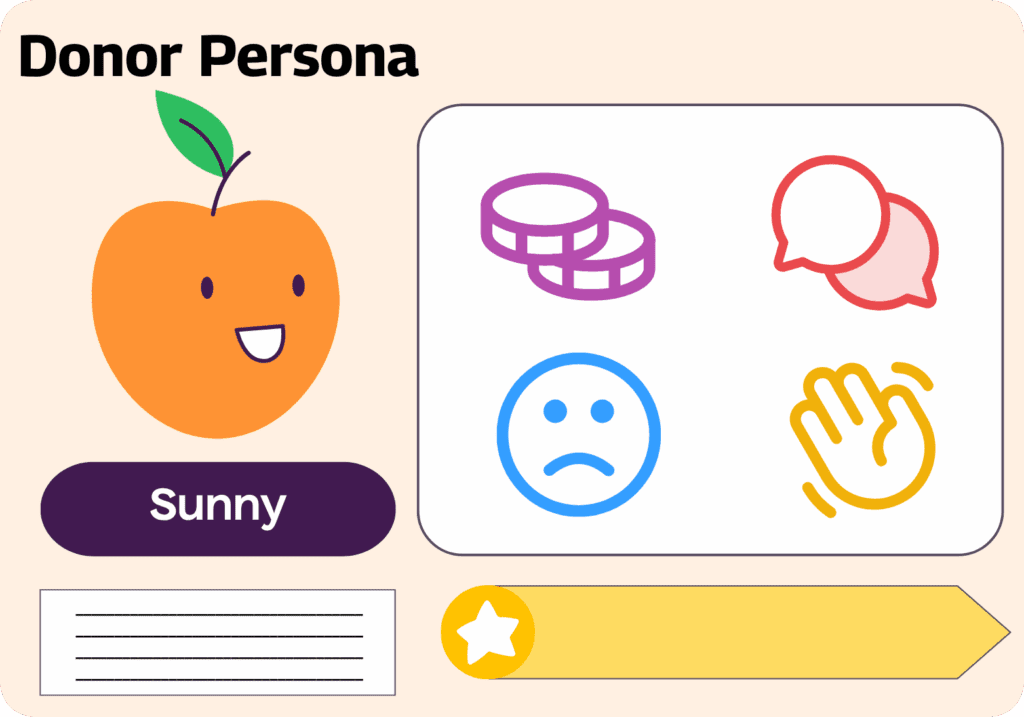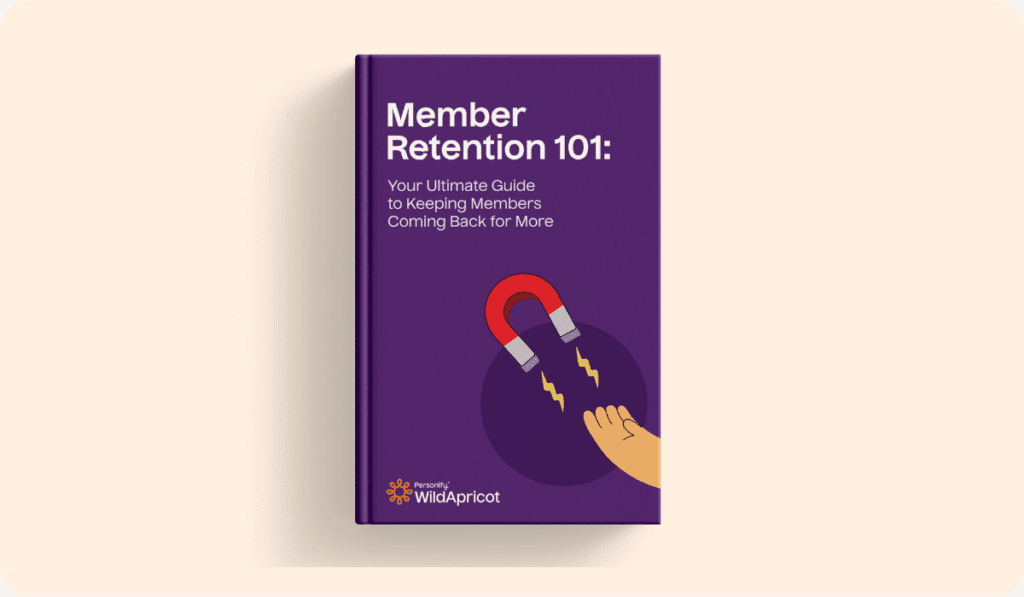Volunteers are one of the strongest pillars of any service organization, without them most organizations aren’t able to achieve their mission and goals.
Do a quick check-in: how many volunteers do you have? Are you struggling to gain more? Is your volunteer recruitment process in need of an update – or perhaps a complete overhaul?
Have no fear, we’re here to help.
From planning to post-recruitment analysis, we’ll show you step by step how to build a volunteer recruitment strategy that works for your organization. Whether you’re the only person managing the volunteer program or you have a whole team, you’ll see success in your recruitment efforts!
Once you reach the end of the post, be sure to check out the volunteer recruitment checklist for a quick summary of the key steps we outline here.
The Importance of Volunteer Recruitment
Before we dive into how to recruit volunteers, we wanted to remind you why volunteers are so important for your organization. Volunteers provide essential support that allows you to achieve your mission, expand your impact and build stronger relationships with your community.
As you build your recruitment strategy, keep those three things in mind. Your volunteer recruitment efforts bring so much more to your organization than an increased amount of volunteers.
Successful volunteer recruitment:
- Expands your nonprofit’s capacity and reach. You’ll be able to serve more people, run additional programs and bring awareness to a wider audience. Plus, an increase in volunteers can free up staff time on simple admin tasks, allowing more time to focus on strategic priorities.
- Cost-effective. An increased volunteer base provides valuable labor to your organization without the financial cost of hiring additional staff. This allows you to allocate your limited funds toward other things that drive your mission like impactful programs and fundraising efforts.
- Fosters long-term supporters. By willingly giving their free time to your organization, volunteers are personally connected to your mission. This often leads to long-term relationships, like becoming donors, advocates or even board members.
- Boost fundraising efforts. As major advocates for your cause, volunteers’ passion can motivate potential donors to give. Chances are that volunteers are staffing your fundraising events, sharing your organization with others and even donating themselves!
How to Create an Effective Volunteer Recruitment Strategy
Building your volunteer recruitment plan is easier than you think! You just have to break it up into 4 major sections: planning, recruiting, applications and onboarding.
To have a successful volunteer recruitment process, you need to include the prep-work and follow-ups in your plan. Plus, you’ll end up with increased engagement, more qualified volunteers and higher retention!
Phase 1: Volunteer Recruitment Planning
If you’re new to volunteer recruitment, or if your organization doesn’t have a formal process in place, you’ll need to do a little planning before you launch that first volunteer job posting.
As volunteer manager(s) – if you have one at your organization- you should be asking yourself the following questions during the planning phase.
1. Who Will Recruit Volunteers?
If your organization has a volunteer manager, that person should be leading the charge.
But if no one person is responsible for volunteer recruitment, consider gathering your existing Event Committee Chairs or your Board of Directors to establish a volunteer recruitment team to help identify, screen, orient and manage event volunteers. This could be a team of long-time dedicated volunteers who are familiar with your operations and can provide valuable insights into your volunteer program.
2. What Are Our Volunteer Needs?
To help find your target audience for a prospective volunteer, it’s important to define specific volunteer assignments or roles. This will make your job easier when qualifying candidates and give applicants a positive experience. No one wants to fill out an application for a position they wouldn’t enjoy/weren’t able to do due to time commitment, requirements or location.
If your organization has been around for a while, you’ve probably got this covered. If not, though, here are a few questions for you to consider.
3. Where Do We Need Volunteers?
For day-to-day operations? Special programs? A specific event?
Don’t forget to keep an open mind. Even if a volunteer doesn’t immediately seem to suit your organization due to their schedule, you might be able to find a task that’s previously been neglected that they can take on.
Sometimes individuals can volunteer from home! A great example is from the Charlotte Humane Society, they offer virtual volunteer opportunities to transcribe voicemails. This saves staff from listening to every voicemail, taking notes and following up appropriately. All they need to do is read the notes in the excel sheet and follow up with the caller!
4. How Many Volunteers Do We Actually Need?
If you’re building a house, you may need a whole crew. But if you’re supplementing the staff at your local library, you may only need 4 to 5.
The number of people you need will influence what positions you list, how many volunteers you can take for those opportunities and how you should prioritize your recruitment efforts.
5. What Skills Are We Looking For?
Do you need volunteers who can lead teams, speak on behalf of your organization or work independently? Do you need a certain amount of volunteer experience?
It’s important to be clear about what you need, so that you’re not wasting your time or potential volunteers’ by talking to people who aren’t the right fit. Everyone has valuable skill sets, but not every prospective volunteer will be the right fit for your available positions.
Choose a Recruitment Strategy
There are several approaches to recruiting volunteers, each suited to different types of volunteer opportunities.
Mass appeals
When you need a large number of volunteers, but don’t need them to have any special skills. Sometimes called “warm body recruitment,” the goal is to attract as many people as possible. Tactics include publicizing your call for volunteers in the media, posting your message on all your communications channels, sending mass emails and putting a sign out in front of your building.
Targeted recruitment
When you need specific skills for your volunteer positions. Tactics include reaching out to groups like professional associations, university programs or clubs to find individuals who want to share their expertise.
Networking
Use the relationships of your existing volunteers to find more. This includes tactics like informal referrals and more formalized mixers or networking events. This works best if you’re just looking for a few volunteers, or know that the people who already work with you have the skills you need.
However, before setting out to recruit anyone, think about your organization’s goals.
What positions do you really need to fill right now?
Look at your current volunteers’ demographics and skill sets, focus your strategy around finding future volunteers that fit those same characteristics – they’re more likely to be long-term, dedicated volunteers for your organization.
Phase 2: Active Volunteer Recruitment
Recruiting volunteers doesn’t usually require creating a lot of new material. With a section on your website and a good volunteer job description, you can go a long way.
Add Positions to Your Website
For many potential volunteers, your website will be the first place they look for information. Make it easy for them to find out about volunteering, which roles are available and how to get involved. Simplify your application process with an online form and a clear call-to-action. This will eliminate the hassle of waiting for someone to email or call them back, improving the volunteer experience.
Create a Volunteer Job Description
People like to know what they’re getting into. Volunteer job descriptions make the expectations clear, and help organizations ask for the help they really need. They also make it easier for volunteers to connect with the roles that will be most meaningful to them.
Your volunteer job description should include:
- A title. Give the role a name, like “Tour Guide” or “Office Support,” or “Tutor”. That will make it easier for volunteers to list it on their CV later, and provides a good overview of the role for anyone scrolling through quickly.
- Necessary qualifications or experience. Does the person need a driver’s license? A/V experience? Experience working with kids? That way, people can eliminate themselves right off the bat if they don’t have the requisite skills.
- Specific responsibilities and typical tasks. What are the major features of the role? Again, this can people decide if the role is suited for them before you go through the interview process.
- Time commitment. When do you need them? For how long? Is this a long-term assignment, or a one-day commitment?
- Supervision. Who oversees the role? Who is their contact person within your organization?
- Benefits. What does the volunteer get out of this?
How to Target Potential Volunteers: Ideas for Volunteer Recruitment
What’s scarier: asking a total stranger for some of their time, or chatting to a friend of a friend about open opportunities at your organization? Most people would say the latter.
The good news is that many of your future volunteers are probably already marginally connected to you. They know someone you know, are in the neighbourhood, or frequent the same events or places that your organization does. They’re former donors, friends of your club members, and people who care about your cause.
When you think about recruitment more as connecting with these people, instead of as convincing complete strangers to give a chunk of their time to your organization, it seems a lot more possible, doesn’t it?
So, before you launch a full-scale publicity campaign, reach for the lower-hanging fruit: the people you know.
Reconnect with Previous Volunteers
Sometimes organizations without a recruitment process still get offers from people interested in volunteering. If you’ve collected names and contact information, now is the time to get in touch. Reach out to past volunteers, too. They may be ready to come back.
However, if there is no pre-existing list or database of volunteers, you’ll need to develop one going forward by creating a process for gathering and storing this information. This could involve creating a volunteer application form, a volunteer database or at the very least, a spreadsheet.
Leverage Your Existing Connections
Create an email list of potential contacts from your current volunteers, recruitment team/staff and board members. This could be anyone in their circle like friends and family, co-workers, neighbors and community members (religious organizations, clubs, sporting teams). Reach out to these lists and
Create Engaging Marketing Materials
If you’re having trouble identifying enough volunteers within your immediate circle, consider promotional efforts. These marketing strategies will allow your message to be shared with a wider audience – allowing you to reach more potential supporters who might not know about your volunteer opportunities.
Share Impact Stories
Writing a newsletter article or a post for your organization’s blog/forum is a great way to share impactful stories and recruit volunteers. Personal stories can be very motivating for others to get involved and highlight the impact of volunteering. Put calls to action at the bottom of the article/blog for readers to join your efforts and become a volunteer.
Post on Social Media Platforms
Sharing open volunteer opportunities on your social media channels will make it easy for a wide audience to hear about your organization and become new volunteers.You can post compelling videos or photos of past volunteering events and ask for new recruits, then follow up with anyone that “Likes” your post. Chances are these supporters are the target audience and your ideal volunteer.
Don’t forget to utilize hashtags, reposts from your current supporters and popular trends to have reach even further.
Email Marketing
Regularly update your existing supporters and contacts about new volunteer opportunities via email. Make it easy for them to forward these opportunities to friends who might be interested.
If you already have a list of potential volunteers, segment them based on their previous involvement or interests. Send targeted messages to individuals based on what you know about their preferences.
Host Volunteer Recruitment Events
Whether your organization is attending or hosting a volunteer fair, you can share about your organization’s cause and volunteer positions in a location where people are already looking to contribute their time and services. Provide a volunteer application and contact form for individuals to take immediate action.
If you want to share more about your organization in real time, host a volunteer open house where people can learn about opportunities and sign up right away. These events can also provide hands-on experience, such as a mini-project or introductory activity to give prospects an idea of what a volunteer shift might be like.
Volunteer Matching Websites
Signing up with a volunteer-matching site like VolunteerMatch takes the guesswork out of recruitment by connecting your organization’s needs with people who are already looking to give their time. Don’t forget to include your volunteer job description on your listing to be connected with the ideal volunteer candidate.
Community Partnerships
Local businesses, schools, colleges, and other organizations will allow you to access a broader volunteer pool. Consider:
- Putting an ad in your community newspaper
- Posting a request through your municipal or state/province volunteer centre
- Posting a request at a local high school, college or a student volunteer centre
- Connect with faith-based organizations to share your cause with their members
- Ask local companies to include your volunteer appeal in their employee newsletter or storefront window
Corporate Partnerships
If you need to find volunteers with specific skills or experience (like web development, PR or social media expertise), this is where you want to connect with businesses who specialize in those areas. These businesses might even have employee volunteer programs and offer volunteer time off, allowing your organization to acquire volunteers with professional skills without volunteers losing out on their income or vacation time.
Read more: Why Your Organization Needs Young Volunteers + How to Recruit and Motivate Them
Phase 3: Applications and Screening
So, you’ve started recruiting and gotten a few responses. Now you need more information about your prospects.
An informal chat or a formal interview will help both the organization and volunteer get the relevant details about each other and set appropriate expectations.
During this time:
- Introduce the organization and outline the event or program that needs volunteers
- Describe specific volunteer roles, including time commitment and tasks
- Discuss the person’s past volunteer and/or professional experience
- Determine what role might suit this individual, based on their interests and qualifications
- Explain the next steps toward volunteering
- Answer questions or provide a contact person for questions
Some nonprofit organizations may have a more formal volunteer interview processes, occasionally a request for references. However, this is usually for more specialized volunteer jobs, or ones that deal with vulnerable populations.
Most will hire for volunteering opportunities like manning a booth at the state fair, which has a much simpler process. It really just depends on what kind of position your organization is looking for, and on the type of person/skills you need.
Phase 4: Onboarding
Informing and onboarding your new volunteers is phase of the recruitment process that is often overlooked. If you wait too long to get back to potential volunteers, they’ll take their time and talents elsewhere.
Clearly communicate your timeline for making decisions about volunteer assignments during the end of phase 3. It shows volunteers that you value their time and contributions — meaning they’re likely to start off on a much better foot and speak more highly of your organization.
Read more: New Volunteer Checklist: How to Onboard and Welcome New Volunteers
How to Politely Reject a Volunteer Applicant
And what about the people who aren’t quite right?
It’s not as much fun, but you must also contact these people to explain you will not be moving forward — it’s not fair for them to have to wait and wait without getting a response from you. Thank them for their interest, and if they take it well, you can offer other ways to get involved with your cause.
If the timing just wasn’t right, you can also offer to contact them again in the future, or ask them to reach out in a few months to see if there are opportunities more suited to their skills.
Welcoming Your New Volunteers
Now that you’ve made the decision about which volunteers you are bringing on board and which roles they’ll play, the onboarding process can officially begin. We’ll cover the basics but to dive further into volunteer onboarding, check out our blog here.
Send your new and eager volunteers a welcome email, complete with the job description, time commitment, relevant dates and times and contact person at your organization. Again, this sets clear expectations for everyone.
Outline the next steps they’ll need to take to start volunteering. Introduce them to your volunteer orientation process, and any other training they’ll need to complete before they take on their role.
That way, there won’t be any misunderstandings about timing and they’ll know what’s required at every step of the way.
Orientation
Volunteer orientations give new volunteers an overview of your organization and an understanding of how their help fits in. It can also help them feel included in your community and get excited about their role.
While orientation sessions will differ depending on the volunteer job tasks, here is an overview of the type of information you might want to include in your orientations:
- An overview of the organization – mission, vision and values
- Description of the program or event and its objectives (show a video, photos, etc.)
- Outline of the specific volunteer job and tasks
- Details on planning – schedule of meetings, activities, list of responsibilities etc.
- Information on resources that pertain to their role, necessary record or document keeping, and support systems.
- Confirm their contact information – name, email address, residence, phone number etc.
- Complete any necessary paperwork like waivers or media releases.
Mentorship Program
Implementing a mentorship program can provide new volunteers with one of the most excellent resource they could have – your most passionate volunteers!
A mentor program will recognize your committed volunteers by asking them to take new volunteers under their wing; sharing their experiences and advice. This will build an active community amongst your volunteers where newbies can have their questions answered, a friendly face at volunteer functions and ultimately a support system.
Maintain the Volunteer Relationship
A successful volunteer recruitment strategy will always rely on help from your current volunteers. They’ll be your biggest supporters and vital for your volunteer recruitment efforts. Its important to build a relationship during the active recruitment phase, nurture it during the onboarding phase and maintain it as you grow your volunteer base.
Here’s some ideas to implement for maintaining the volunteer relationship:
- Show volunteer appreciation
- Build a strong volunteer network
- Listen to feedback from volunteers
- Offer networking opportunities
- Implement email newsletters
- Stay active on social media channels
- Provide exciting volunteer opportunities
- Be considerate of volunteer time
If you followed our tips, your organization will increase volunteer engagement, boost retention rates and make a larger impact for your mission!
Read more: How to Write a Volunteer Thank-You Letter That’s Actually Meaningful (+ Template)
For a complete guide on how to get new volunteers set up with your organization, check out this article, as well as this checklist of everything you need to do to welcome your new volunteers.
Volunteer Recruitment Doesn’t Have To Be Hard
With effective planning and volunteer management tools in place, the volunteer recruitment and retention process should be streamlined and less stressful. Soon, you’ll be bringing in a steady supply of new people who are excited to get involved with your organization!
Read More: How to Create a Winning Volunteer Newsletter: Ideas, Examples and Templates to Inspire









